BACK TO finale_winnerS
Best Design Impact: Interior Design Category
THE FOLKTALE OF THE LUA JIA NIAN ROAD - EMPOWERING A DIGNIFIED LIFESTYLE FOR THE LOCALS
The Folktale of the LuoJiaNian Road "Empowering A Dignified Lifestyle for the Locals" In today’s era of rapidly advancing information technology, the boundaries between life and work are becoming increasingly blurred. People's lifestyles are undergoing major transformations, and with continued economic development and contemporary urban planning, the integration of living and working spaces has become […]
"Empowering A Dignified Lifestyle for the Locals"
In today’s era of rapidly advancing information technology, the boundaries between life and work are becoming increasingly blurred. People's lifestyles are undergoing major transformations, and with continued economic development and contemporary urban planning, the integration of living and working spaces has become common for many. In high-density, high-intensity urban environments, it is not unusual for people—particularly shop owners—to live in the same spaces where they work, especially in older street front shops.
However, in the past decade, as China’s economy has grown at an unprecedented pace, architectural and design attention has largely shifted toward commercial complexes and large-scale real estate developments. As a result, fewer efforts have been made to consider or support this unique population. Yet, compared to the sanitized, impersonal atmosphere of modern commercial centers, older neighborhoods often foster stronger neighborly relationships and a deeper sense of community. This project seeks to challenge the perception that living in one’s shop is undignified. Instead, it aims to reframe this way of life as both respectable and worthy of preservation through thoughtful and empathetic design.
Based on field research in older urban districts, the project observes and analyzes the living patterns of shop owners, referencing classic design precedents and drawing creative inspiration to propose a multi identity, multi-tasking residential environment. The goal is to break down rigid functional boundaries in spatial design, allowing for greater adaptability to the diverse and evolving rhythms of urban life. This approach envisions space not as a set of fixed functions, but as a stage that can support a wide range of everyday actions and experiences.
Departing from conventional residential models—typically composed of segmented parts like the bedroom, living room, and kitchen—this project redefines the concept of “home” as a series of lived scenes. People often feel a sense of home not because they are in a traditional house, but because of specific emotional or sensory memories tied to particular domestic moments. A fragment of a shared meal, a conversation in the kitchen, or quiet time with family can each evoke a powerful sense of belonging.
Using observations from five different shops—each with its own commercial function and spatial behavior—the design identifies shared human experiences and reinterprets them into five key domestic scenes:
Each of these scenes serves as a spatial strategy within the shop’s layout, offering both familiarity and comfort. By simulating these scenes through targeted design elements and spatial configurations, the project seeks to rebuild the relationships not only between shopkeepers and their customers, but also among customers themselves. This approach strengthens emotional connections to the space and fosters a warmer, more human-centered environment.
Ultimately, the project integrates traditional elements of domestic life with the operational needs of street front commerce to create a modular, approachable live-work space. It is both practical and emotionally resonant—designed to support a multi-tasking, multi-identity way of living. On one hand, it enhances the functional utility of limited urban space. On the other, it brings a sense of intimacy and warmth to the fast-paced life of the city, reinforcing human connection in the midst of urban intensity.
This is not just a spatial proposal—it is a call to respect an overlooked lifestyle and recognize the dignity of those who live and work in the same place. Through design, we can make these spaces not only more efficient, but more meaningful.
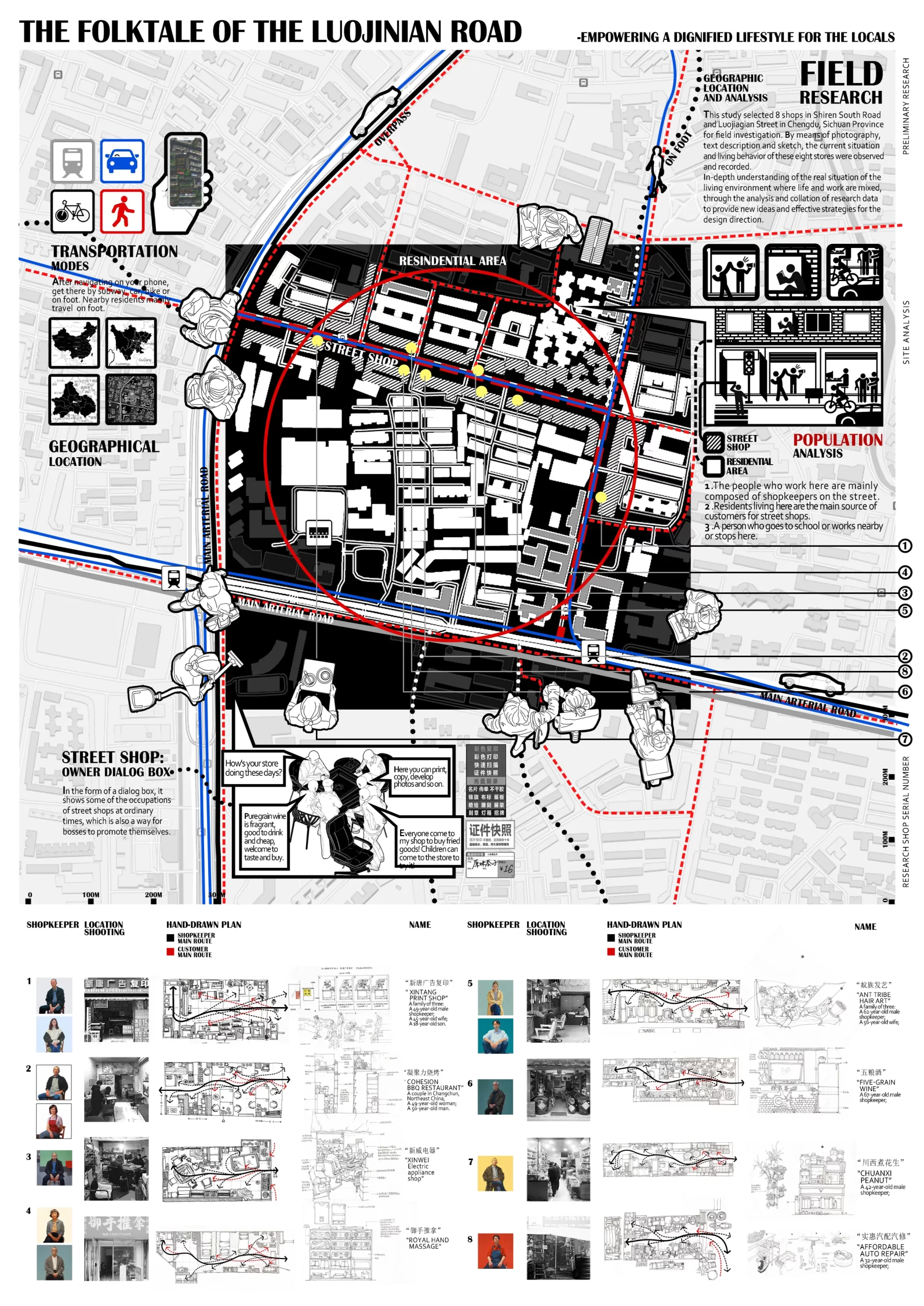
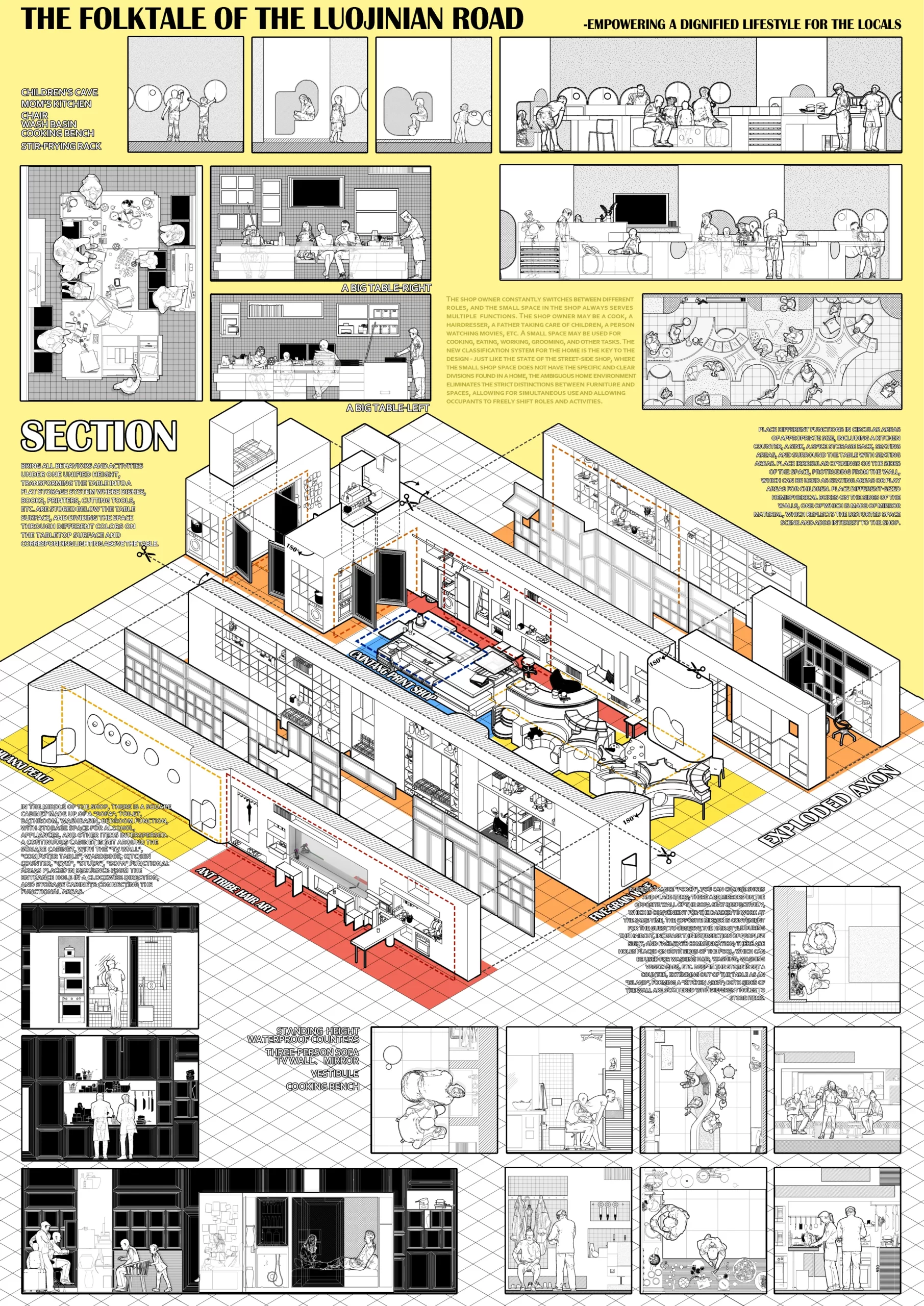
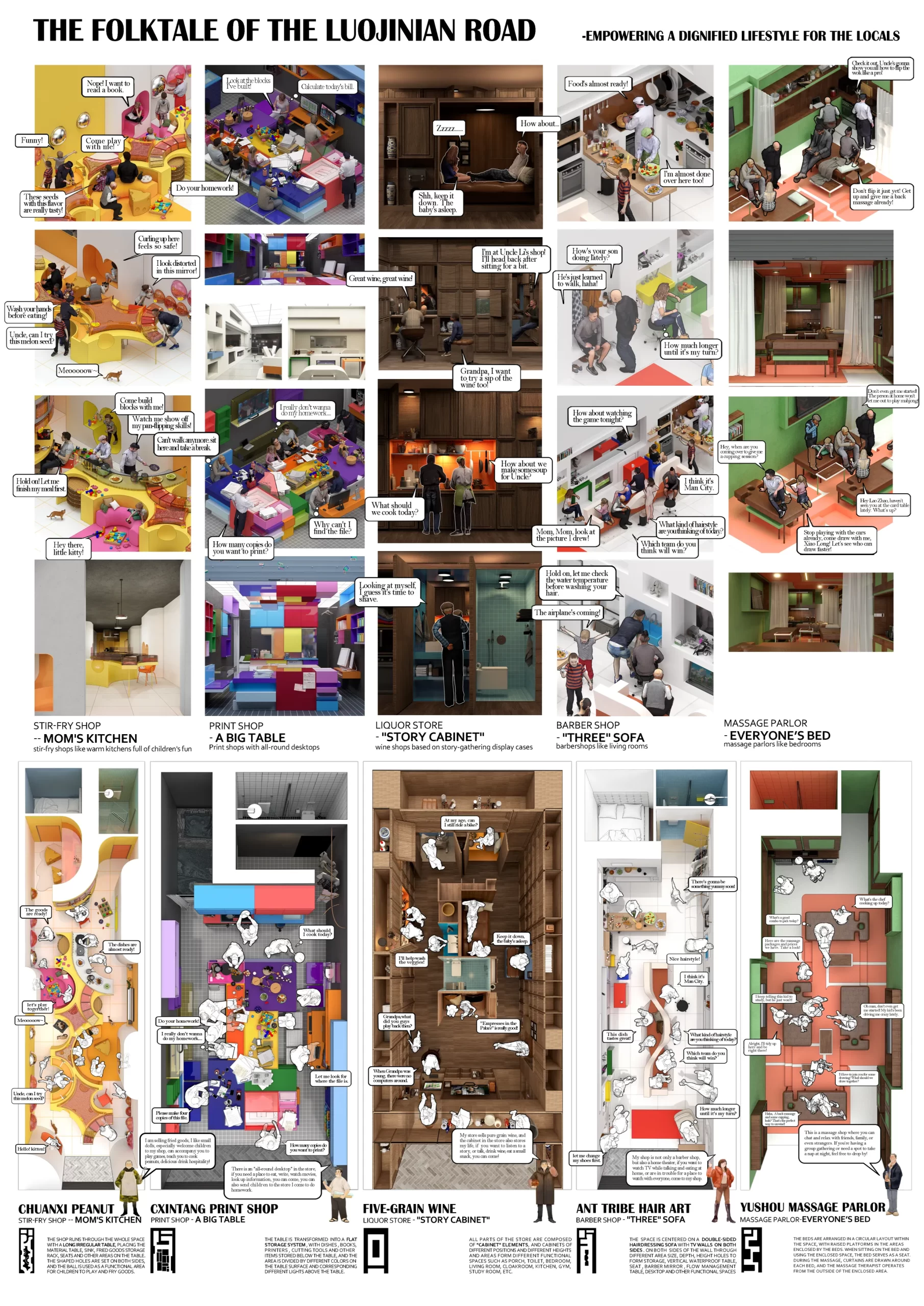
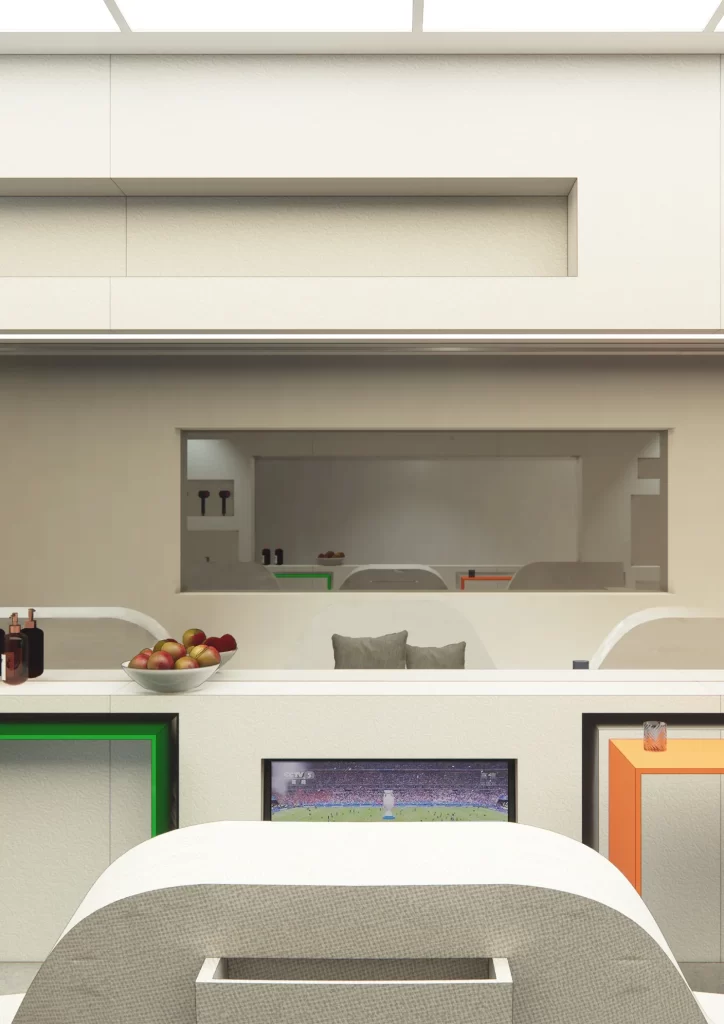
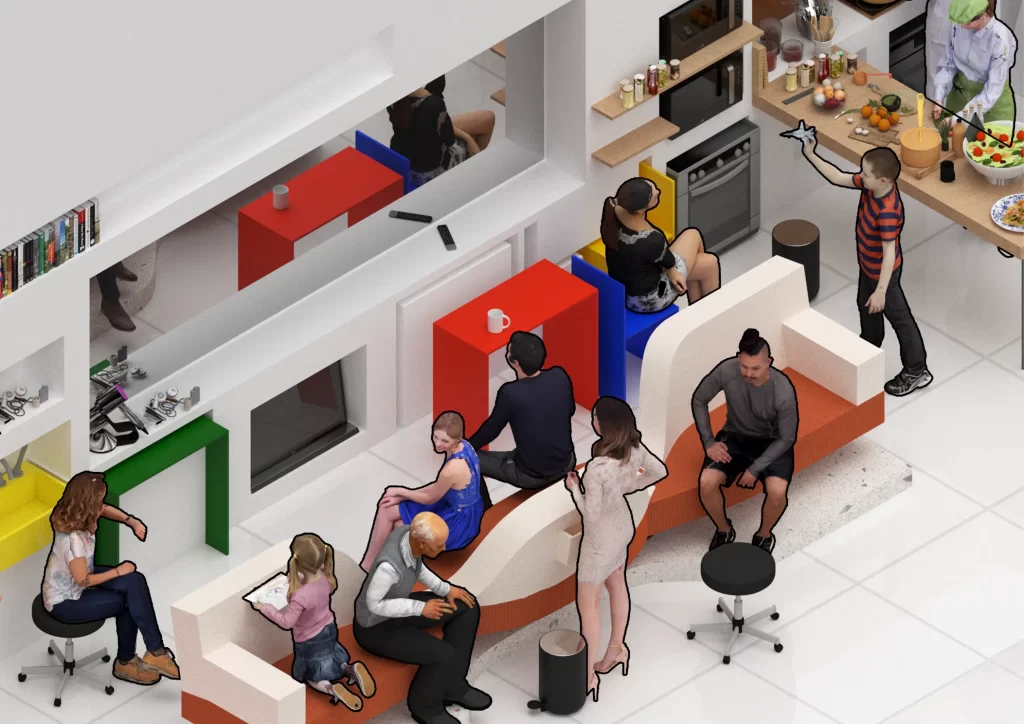

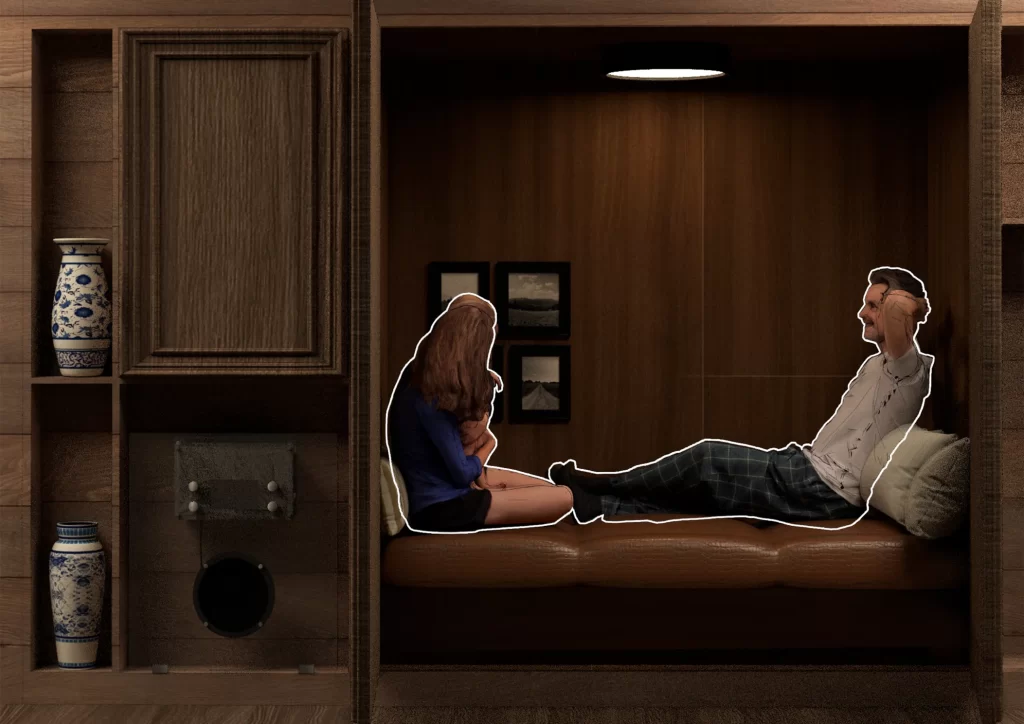
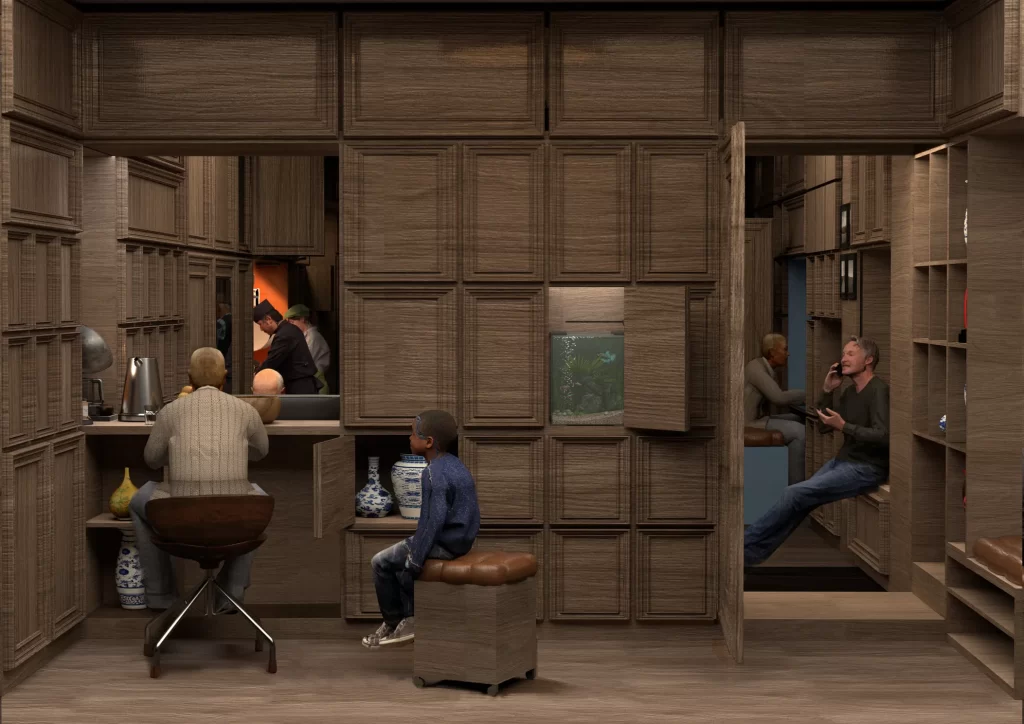
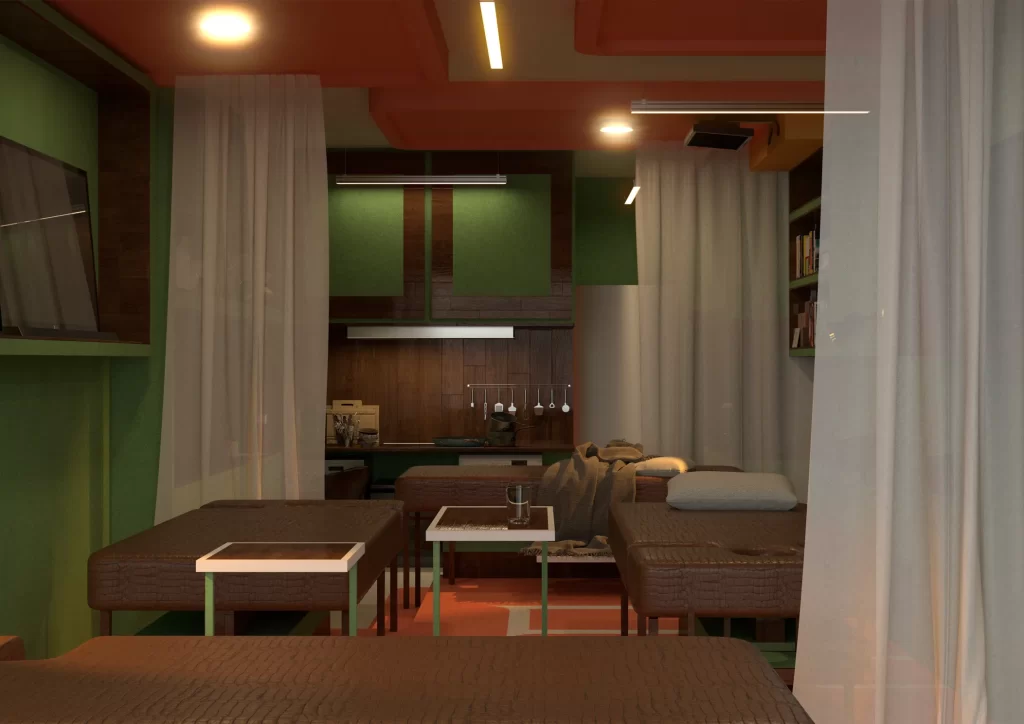
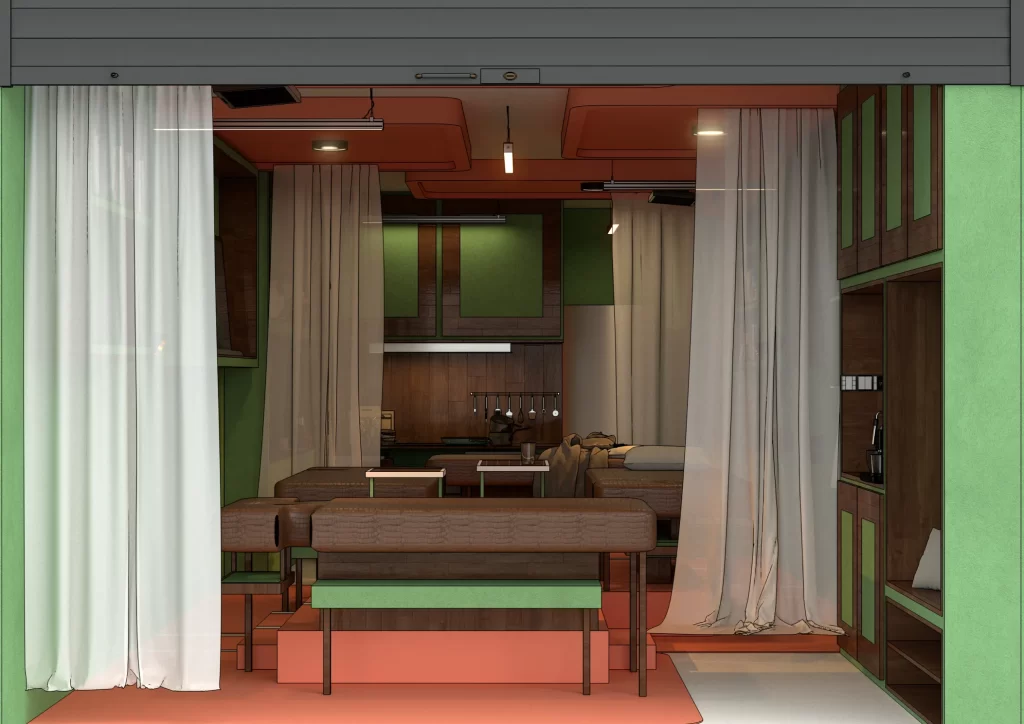

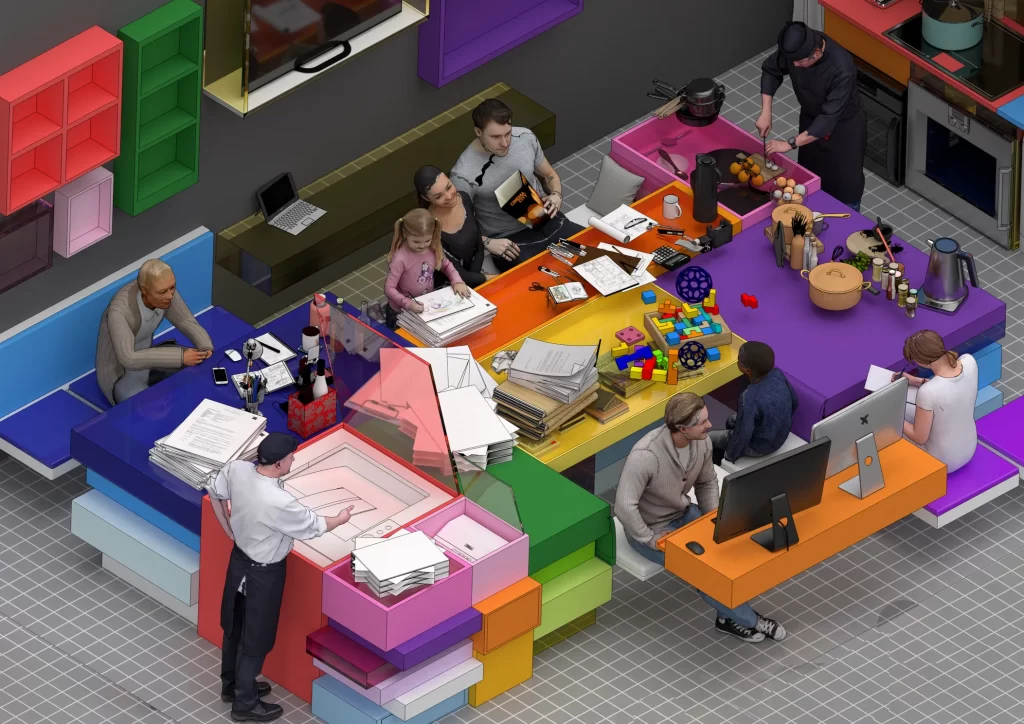

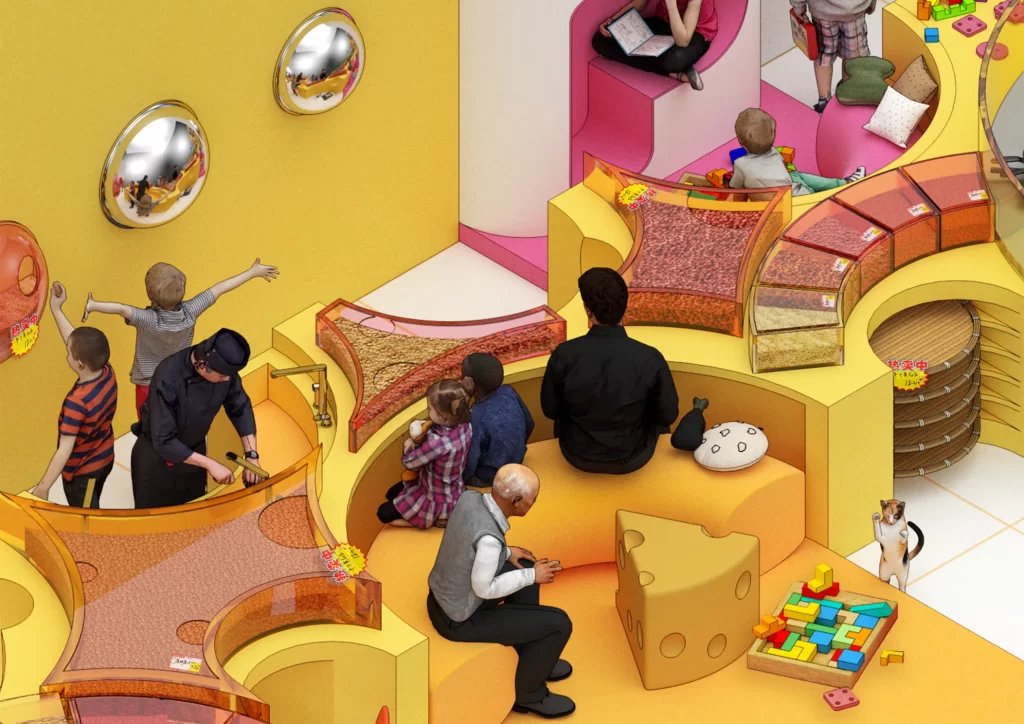
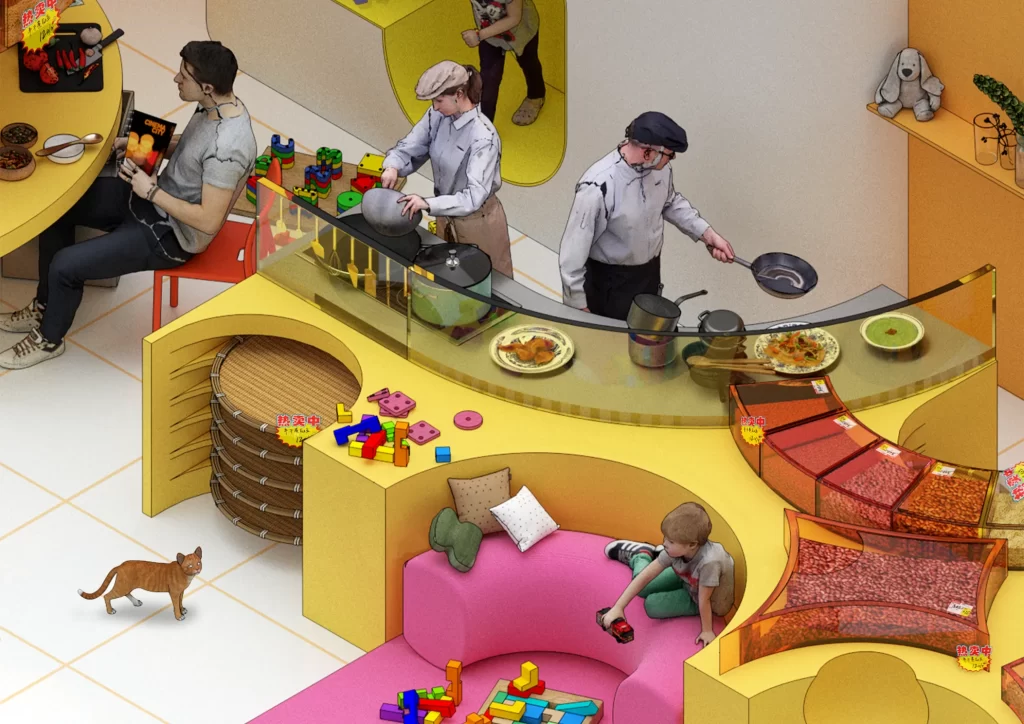
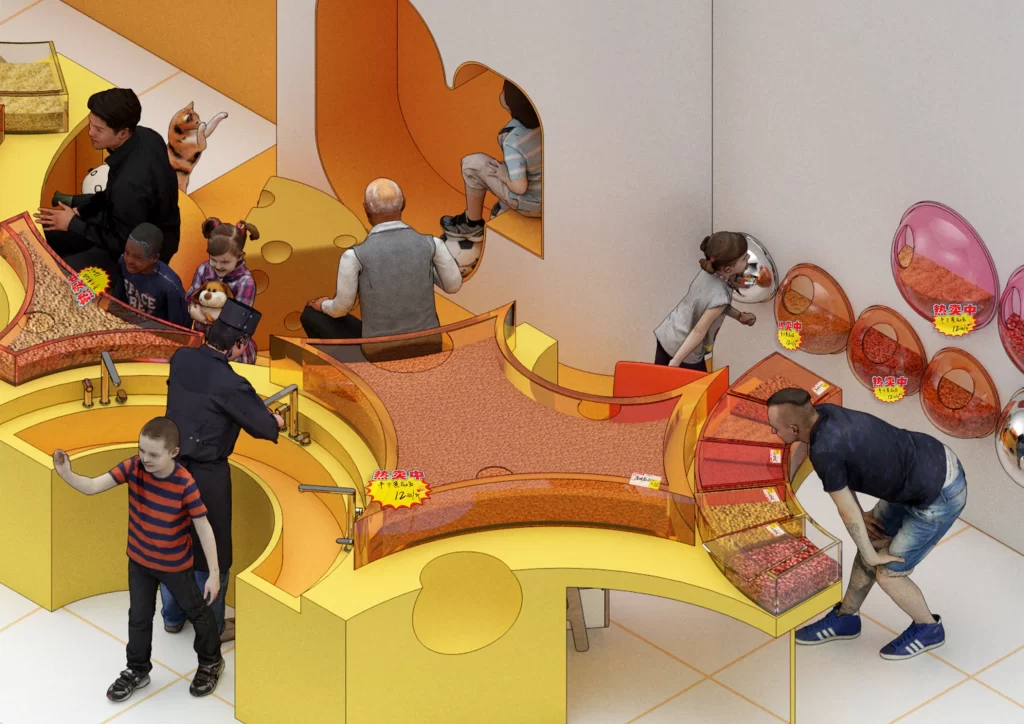
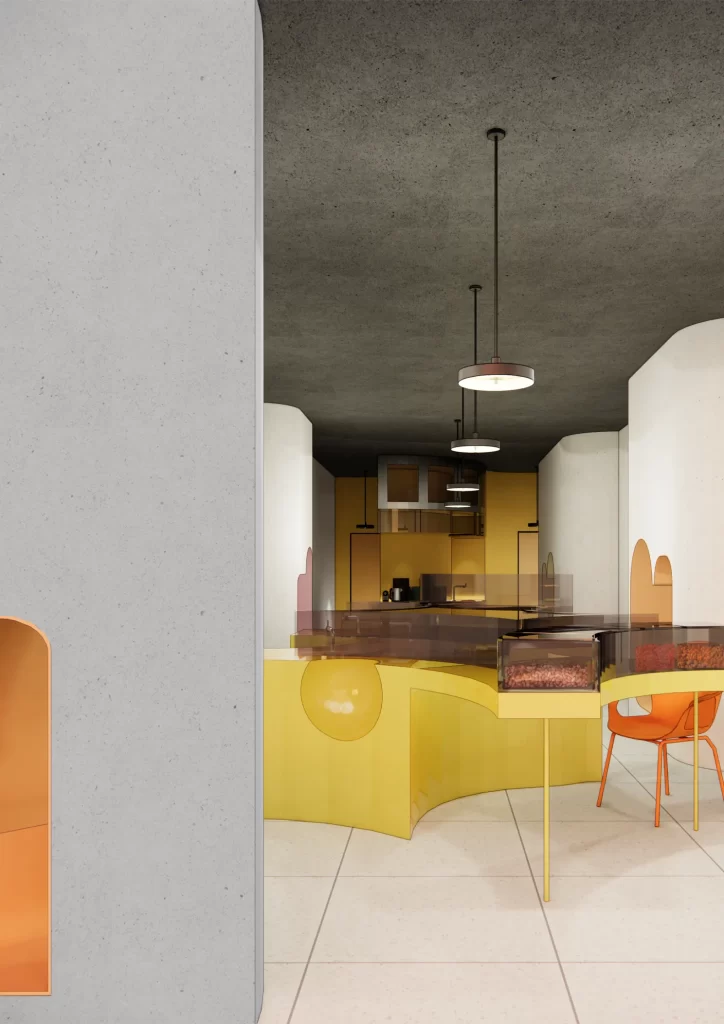

Showcase your design to an international audience
SUBMIT NOW
Image: Agrapolis Urban Permaculture Farm by David Johanes Palar
Top
"Empowering A Dignified Lifestyle for the Locals" In today’s era of rapidly advancing information technology, the boundaries between life and work are becoming increasingly blurred. People's lifestyles are undergoing major transformations, and with continued economic development and contemporary urban planning, the integration of living and working spaces has become common for many. In high-density, high-intensity urban environments, it is not unusual for people—particularly shop owners—to live in the same spaces where they work, especially in older street front shops. However, in the past decade, as China’s economy has grown at an unprecedented pace, architectural and design attention has largely shifted toward commercial complexes and large-scale real estate developments. As a result, fewer efforts have been made to consider or support this unique population. Yet, compared to the sanitized, impersonal atmosphere of modern commercial centers, older neighborhoods often foster stronger neighborly relationships and a deeper sense of community. This project seeks to challenge the perception that living in one’s shop is undignified. Instead, it aims to reframe this way of life as both respectable and worthy of preservation through thoughtful and empathetic design. Based on field research in older urban districts, the project observes and analyzes the living patterns of shop owners, referencing classic design precedents and drawing creative inspiration to propose a multi identity, multi-tasking residential environment. The goal is to break down rigid functional boundaries in spatial design, allowing for greater adaptability to the diverse and evolving rhythms of urban life. This approach envisions space not as a set of fixed functions, but as a stage that can support a wide range of everyday actions and experiences. Departing from conventional residential models—typically composed of segmented parts like the bedroom, living room, and kitchen—this project redefines the concept of “home” as a series of lived scenes. People often feel a sense of home not because they are in a traditional house, but because of specific emotional or sensory memories tied to particular domestic moments. A fragment of a shared meal, a conversation in the kitchen, or quiet time with family can each evoke a powerful sense of belonging. Using observations from five different shops—each with its own commercial function and spatial behavior—the design identifies shared human experiences and reinterprets them into five key domestic scenes: Each of these scenes serves as a spatial strategy within the shop’s layout, offering both familiarity and comfort. By simulating these scenes through targeted design elements and spatial configurations, the project seeks to rebuild the relationships not only between shopkeepers and their customers, but also among customers themselves. This approach strengthens emotional connections to the space and fosters a warmer, more human-centered environment. Ultimately, the project integrates traditional elements of domestic life with the operational needs of street front commerce to create a modular, approachable live-work space. It is both practical and emotionally resonant—designed to support a multi-tasking, multi-identity way of living. On one hand, it enhances the functional utility of limited urban space. On the other, it brings a sense of intimacy and warmth to the fast-paced life of the city, reinforcing human connection in the midst of urban intensity. This is not just a spatial proposal—it is a call to respect an overlooked lifestyle and recognize the dignity of those who live and work in the same place. Through design, we can make these spaces not only more efficient, but more meaningful.The Folktale of the LuoJiaNian Road




















